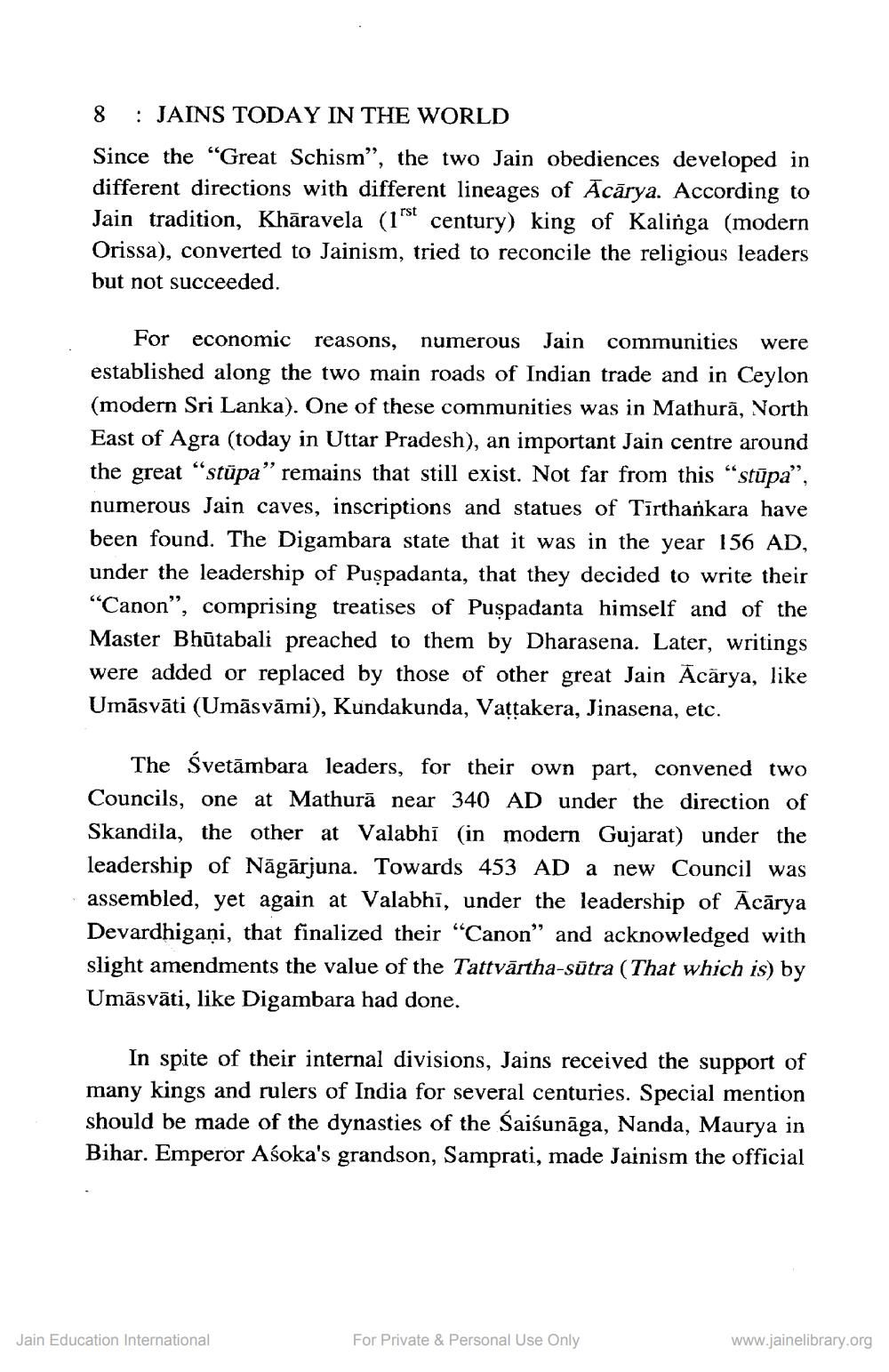________________
8 : JAINS TODAY IN THE WORLD
Since the "Great Schism", the two Jain obediences developed in different directions with different lineages of Acarya. According to Jain tradition, Khāravela (1st century) king of Kalinga (modern Orissa), converted to Jainism, tried to reconcile the religious leaders but not succeeded.
For economic reasons, numerous Jain communities were established along the two main roads of Indian trade and in Ceylon (modern Sri Lanka). One of these communities was in Mathura, North East of Agra (today in Uttar Pradesh), an important Jain centre around the great "stupa" remains that still exist. Not far from this "stūpa", numerous Jain caves, inscriptions and statues of Tirthankara have been found. The Digambara state that it was in the year 156 AD, under the leadership of Puspadanta, that they decided to write their "Canon", comprising treatises of Puspadanta himself and of the Master Bhūtabali preached to them by Dharasena. Later, writings were added or replaced by those of other great Jain Acarya, like Umāsvāti (Umāsvāmi), Kundakunda, Vaṭṭakera, Jinasena, etc.
The Śvetambara leaders, for their own part, convened two Councils, one at Mathura near 340 AD under the direction of Skandila, the other at Valabhi (in modern Gujarat) under the leadership of Nagarjuna. Towards 453 AD a new Council was assembled, yet again at Valabhi, under the leadership of Acārya Devardhigani, that finalized their "Canon" and acknowledged with slight amendments the value of the Tattvärtha-sutra (That which is) by Umāsvāti, like Digambara had done.
In spite of their internal divisions, Jains received the support of many kings and rulers of India for several centuries. Special mention should be made of the dynasties of the Śaisunaga, Nanda, Maurya in Bihar. Emperor Aśoka's grandson, Samprati, made Jainism the official
Jain Education International
For Private & Personal Use Only
www.jainelibrary.org




